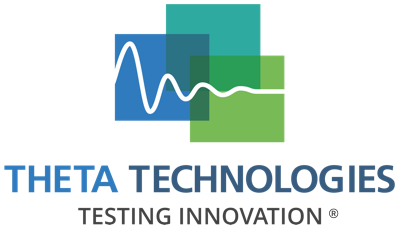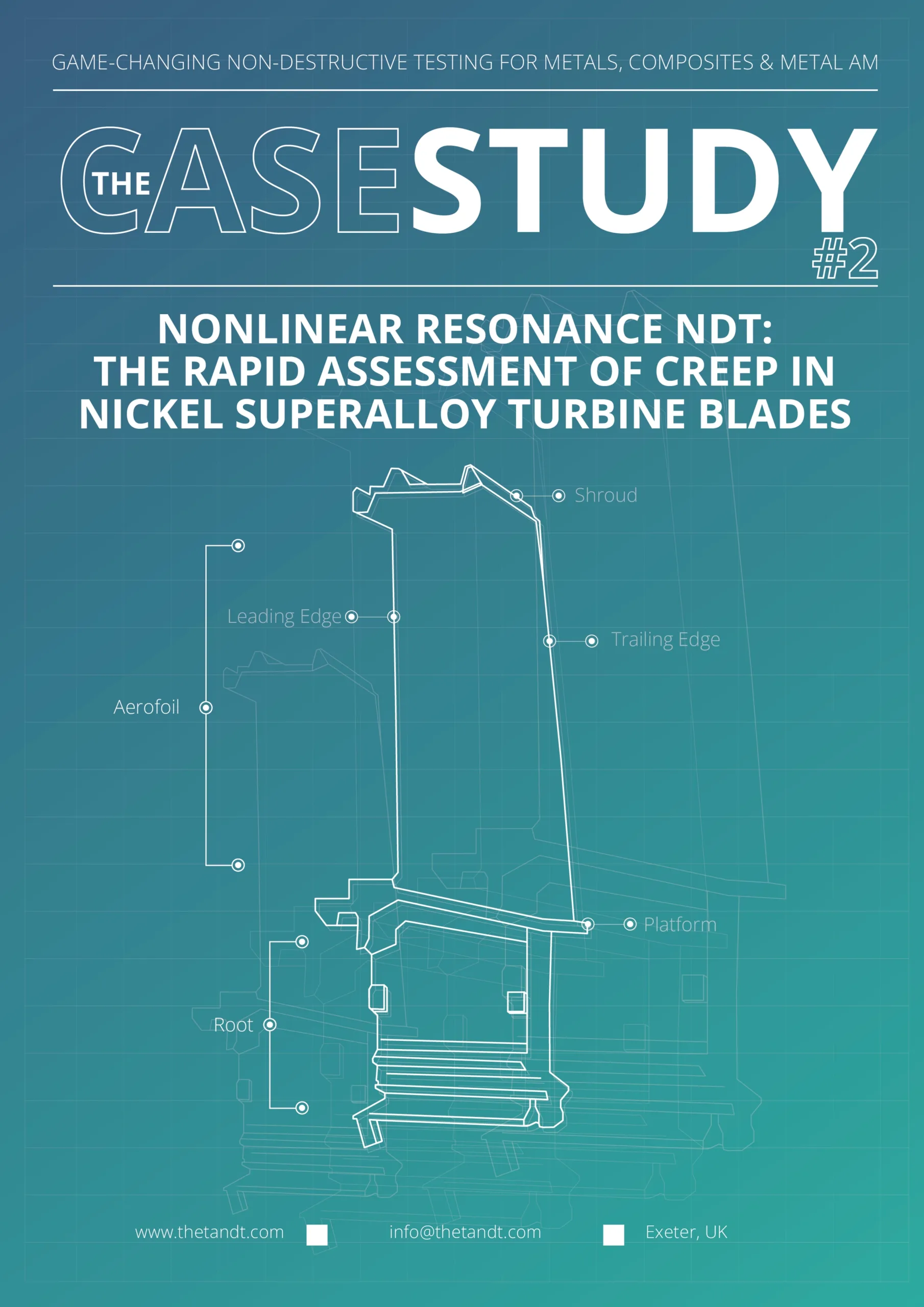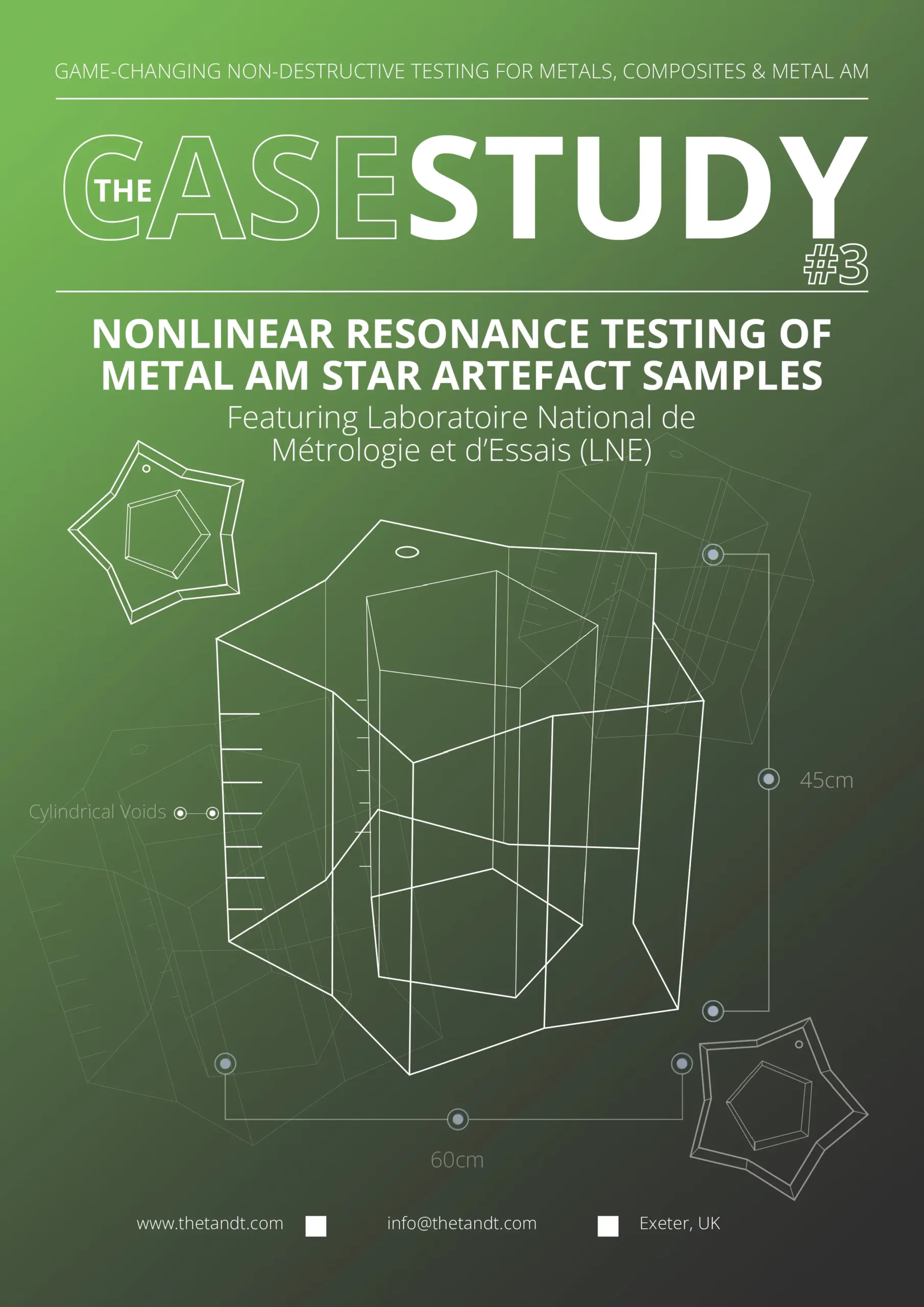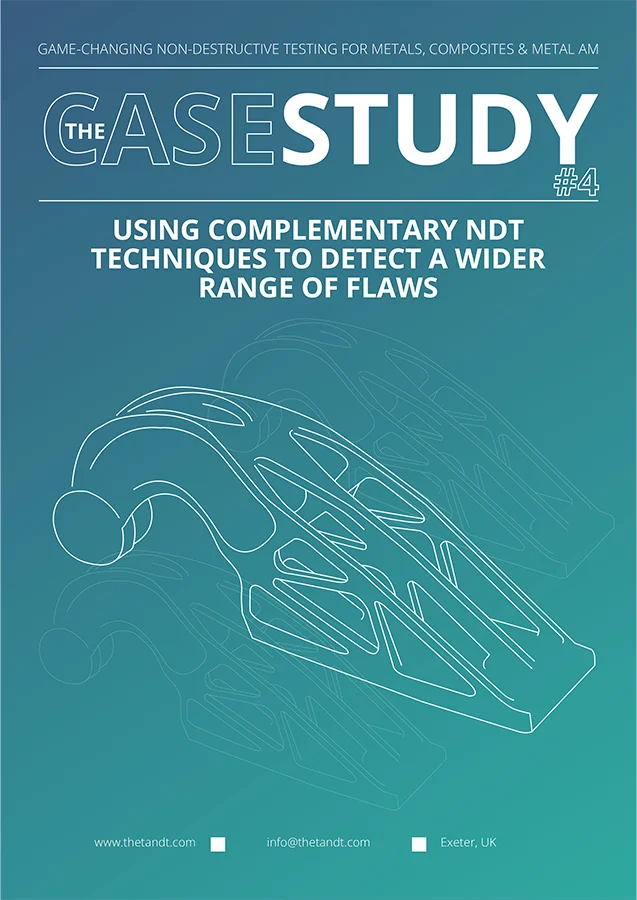HIGHLY COMMENDED PRODUCT
POST-PROCESSING AWARD
This game-changing non-destructive testing solution has been recognised at this year’s TCT Awards for offering an impressive portfolio of benefits for additive manufacturers during post-processing.
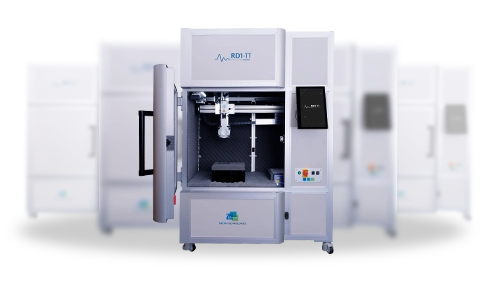
NDT for Additive Manufacturing
In this captivating interview with CEO of Theta Technologies, Steve Butler, we dive into the world of additive manufacturing and explore the implications it has brought to the industry. This interview provides valuable insights into the transformative power of 3D printing and the crucial role of non-destructive testing (NDT) in ensuring the quality and reliability of increasingly complex parts. We unravel the impact of additive manufacturing on manufacturing decisions, the challenges it poses, and the innovative solutions Theta Technologies is bringing to the market.
Revolutionising Additive Manufacturing:
Overcoming Challenges with Non-Destructive Testing
In this interview, Steve sheds light on the ground-breaking work Theta Technologies is undertaking as he introduces RD1-TT, their first commercially available machine, which revolutionises the non-destructive testing process by enabling rapid go-no-go detection of flaws in AM parts. By testing components immediately after additive manufacturing or during post-processing, manufacturers can reduce costs associated with value-added processes on potentially flawed parts. Steve emphasises the benefits of early testing and the ability to detect flaws without delaying production or post-processing operations.
Steve goes on to explain how Theta Technologies’ non-destructive testing capabilities surpass existing methods in the market, particularly X-ray CT scanning. While traditional techniques rely on testing samples from production parts, RD1-TT allows for 100% testing of each 3D-printed part. This breakthrough offers manufacturers unparalleled confidence in the quality and integrity of their products, ensuring that only flawless components advance in the production process.
Interview Transcript
Interviewer: Chris Parker
Interviewee: Steve Butler, CEO, Theta Technologies
Topics: Additive Manufacturing | NDT for Additive Manufacturing | NDT
Q: Steve, can you first explain a bit about your background and your role here at Theta?
A: So, by education, I’m a aeronautical engineer. I worked in the aerospace and defense sectors for most of my career until about three years ago when I was asked to stand in as CEO of Theta Technologies. I am an investor, so I have a small interest in the company financially anyway, so it’s in my best interest to see things at Theta Technologies do well, and it was a great team to join. So here I am.
Q: We will start with the main question about additive manufacturing, what is it and how does it differ from more conventional manufacturing techniques?
A: With traditional manufacturing techniques you take a metal away from a casting or a bar. So you are reducing things by cutting metal away. Additive manufacturing is a reverse. You start with nothing and build the material up from the base to some very complex structures.
Q: Before we start to discuss the non-destructive testing of those parts because that comes with its own set of challenges, how has it impacted manufacturing decisions, that ability to kind of grow something out of nothing?
A: I think it’s still in its infancy, and there’s certainly a lot of potential, but predominantly, I think it’s being used for plastics today and for prototypes, and for rapid testing to see how things can be done. There is an opportunity for 3D printing to become production-focused and volume related longer term.
Q: So, you mentioned prototyping there and there’s an opportunity to become kind of those end-user parts. What is what’s the stumbling block at the moment?
A: That’s a little bit of cost. I think it’s still got to convince people that it is as cost effective as the traditional methods. But also, we need to better prove that the parts are good, fit for purpose, and that’s where non-destructive testing comes in.
Q: And in terms of 3D printing and clearly has its positives for the manufacturing industry. But on that subject of non-destructive testing, it’s brought with it its own set of challenges. What are those challenges that are going to surface as a result of this?
A: Well, one of the design advantages of working with 3D printing is that you can make much more organic shapes that are lighter, more compact, but therefore much more difficult to test using conventional non-destructive testing techniques. There are also very few standards currently that are published and recognised for non-destructive testing of additive manufacturing parts. So, we need to bring the standards to a state where people can recognize and across industries and then we need to develop the techniques to make sure that we can prove that the parts meet the standards.
Q: From your point of view why are the techniques that are already out there struggling with additive manufactured parts?
A: Well the main methods that we come across in competition is C.T.Scan, which is complex expensive and you need trained operatives to use. So, it’s not something that they can use for production. It’s very good for a one off, maybe two or three. But when you start getting to volume, it’s not a technique that you can use regularly, and it doesn’t necessarily detect the sort of cracks that Theta Technologies can see.
Q: Well, that brings us nicely to what you are doing here at Theta. What is it that Theta is hoping to achieve and what is it you’re bringing to the market?
A: So RD1-TT is the first machine that we’ve launched, and it is a rapid go-no-go detection system. So, we can very quickly determine whether there are any flaws on the component at various stages of the build process. So immediately after the additive manufacturing has been completed or sometime during the post-processing techniques.
Q: And that immediately after printing is actually something that up until now has not really been possible.
A: Correct!
Q: What are the benefits of being able to test so early in the production process?
A: By testing early, you stop adding value to the part that may have been defective in the first place. So, you are reducing your overall cost of quality by testing it and testing 100% sample.
Q: What does that adding value mean in simple terms?
A: Well very simply, you process the part, you leave it on the bed. If it’s faulty, there is no point in machining it or doing any post-processing and that’s adding value. So, you are spending money to refine the part into the finish component. There is no point in doing that if it comes off the bed flawed.
Q: In terms of comparing, it to other NDT methods on the market as I understand it, most current methods will test a sample of the production parts rather than what this is capable of doing and testing 100% of those parts that are printed. Is that correct?
A: That’s correct. For AM metal parts, yes!
Q: As far as manufacturers are concerned, they will print x amount of their products and they, thanks to this machine behind us, will be able to test every single one of those parts to make sure they are not flawed.
A: 100%. Yes.
Q: And up until now, that’s not been done?
A: No, an Xray CT machine will take hours per part, and you just can’t do that in a production line.
Q: On the subject of timing, this is obviously very rapid, hence the name. What are we looking at in terms of a benchmark for how long it takes to test?
A: Once the software has been configured and the machine is set up it’s less than a minute. You put the component in the machine, shut the door, select the right program, press the button, and the way you go.
Q: This is a new technology, a new technique. It can sometimes be quite difficult for companies to embrace new technology, what are Theta doing to prove that this technology does what we say it does?
A: There is clearly data that we have available that we can share with people, but the best thing we would do is encourage them to bring their own samples in and we’ll demonstrate that we do what we say we can do.
Q: And has there been in these successes so far?
A: Sure. We’ve had we’ve had several successes across a variety of different materials. Including some non-metallic parts, which was a bit of a surprise.
Q: Just finally, one of these key quality assurance issues, thanks to RD1-TT has been solved for additive manufacturers. What does this mean for additive manufacturing moving forward?
A: Well, it will help the manufacturers of the parts give their customers more confidence in the integrity of the part they are supplying and hopefully speed up the acceptance of additive manufacturing paths to a wider industry.
EXPLORE OUR DIGITAL LIBRARY
Learn more about how Theta Technologies’ revolutionary NDT technology is benefitting quality assurance processes for AM, metal and composite manufacturers by exploring our expanding library of digital case studies.
Issue #2
The Case Study
Nonlinear resonance NDT: The rapid assessment of creep in nickel superalloy turbine blades
Theta Technologies Limited

Address
Theta Technologies Limited
3 Babbage Way
Exeter Science Park
Clyst Honiton
Exeter
EX5 2FN
United Kingdom
Terms & Conditions Privacy & Cookie Policy Anti-Slavery Policy © Theta Technologies. 2023
